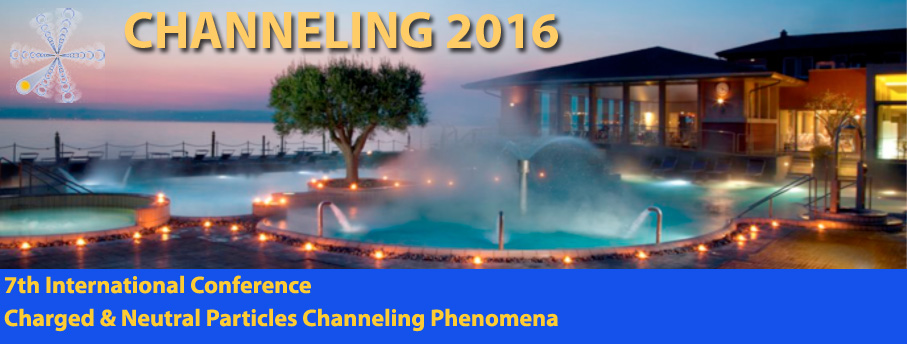Speaker
Andrea Mazzolari
(FE)
Description
The LAUPER project aims to demonstrate the feasibility of a Laue lens optimized to operate with X-rays emitted by a conventional X-ray tube to produce a focused photon beam for radiotherapy applications. In the context of tumor treatment, radiotherapy is an important method consisting in imparting a radiation dose to a target volume in order to destroy cancer cells. Any radiotherapy treatment aims to maximize the dose to the target volume, minimizing at the same time the irradiation of neighboring healthy tissues. Among radiotherapy treatments, hadron therapy uses charged particles beams, namely protons or positive ions, to achieve the aforementioned goal. Indeed, positive ions have a finite range of penetration in a tissue and a high amount of energy released at the end of their track (the Bragg peak). However, the cost of a facility for hadron therapy is very high, at least 100 Me. Only a few dozen of hadron therapy facilities exist in the world, and half of them are concentrated in the United States and in Japan. Thus, only a limited number of patients can access to the high-quality treatment provided by hadron therapy. Conventional radiotherapy relies on electron linear accelerator producing photon beams in the MeV energy range to reach the tumor target and spare the skin. However, such technique is not comparable with the hadron therapy in terms of dose deposition accuracy. The cost of a facility for conventional X-ray treatments ranges in 1-2 M€. A device capable of focusing X-rays would allow concentrating the delivered dose in a target volume. Due to focalization, the photon flux would increase with the penetration depth in the tissue and would reach the maximum at the focal point. The combination of this effect with the photon absorption would give rise to a depth-dose profile showing a pronounced peak at focal point and a rather rapid fall-off beyond this point. This behavior resembles that of a Bragg peak, typical of hadron therapy, resulting in a “Laue peak”. In order to concentrate an X-ray beam, the phenomenon of diffraction can be exploited. A proposed optics is the Laue lens, namely an ensemble of crystals arranged in concentric rings and disposed in such a way to diffract as much radiation as possible toward the focal point of the lens, where the tumor mass is positioned. As sketched in Fig. 1, such a focusing device can be used together with a conventional X-ray tube to focus photons in the energy range 25-250 keV. Thus, it would be possible to reach high precision in the dose delivery with an equipment orders of magnitude less expensive if compared to the cost of a facility for hadron therapy. Indeed, the cost of such equipment would be in the range of 0.2-0.3 M€, even less expensive than the equipment for traditional radiotherapy based on MeV X-ray beams. During this project, we aim to construct a crystal assembly capable of diffracting an 80 keV X-ray beam and producing the aforementioned Laue peak in a proper phantom.
Author
Andrea Mazzolari
(FE)
Co-authors
Angelo Taibi
(FE)
Eva Peccenini
(BO)
Gianfranco Paternò
(FE)
Giovanni Di Domenico
(FE)
Giuseppe Baldazzi
(BO)
Maria Pia Morigi
(B)
Mauro Gambaccini
(FE)
Michele Marziani
(FE)
Nico Lanconelli
(BO)
Paolo Cardarelli
(FE)
Riccardo Camattari
(FE)
Roberto Spighi
(BO)
Valerio Bellucci
Vincenzo Guidi
(FE)

